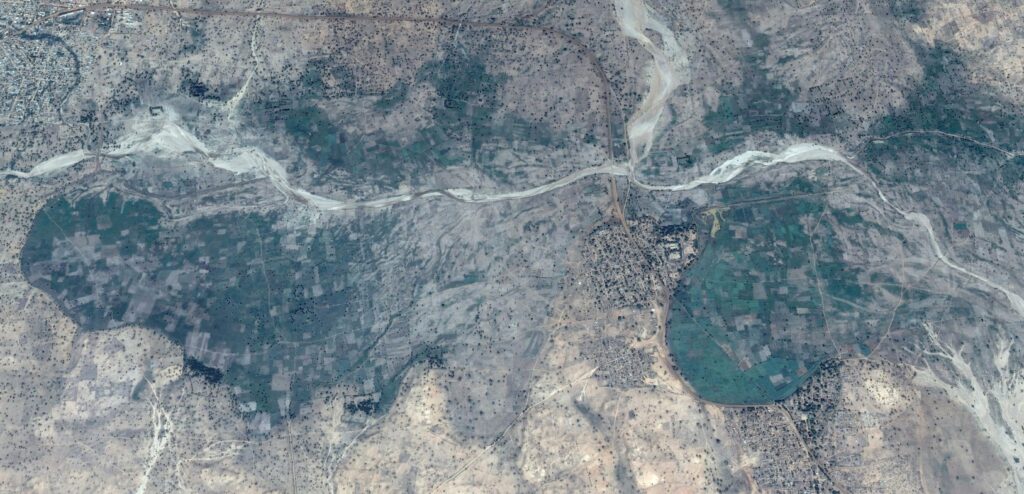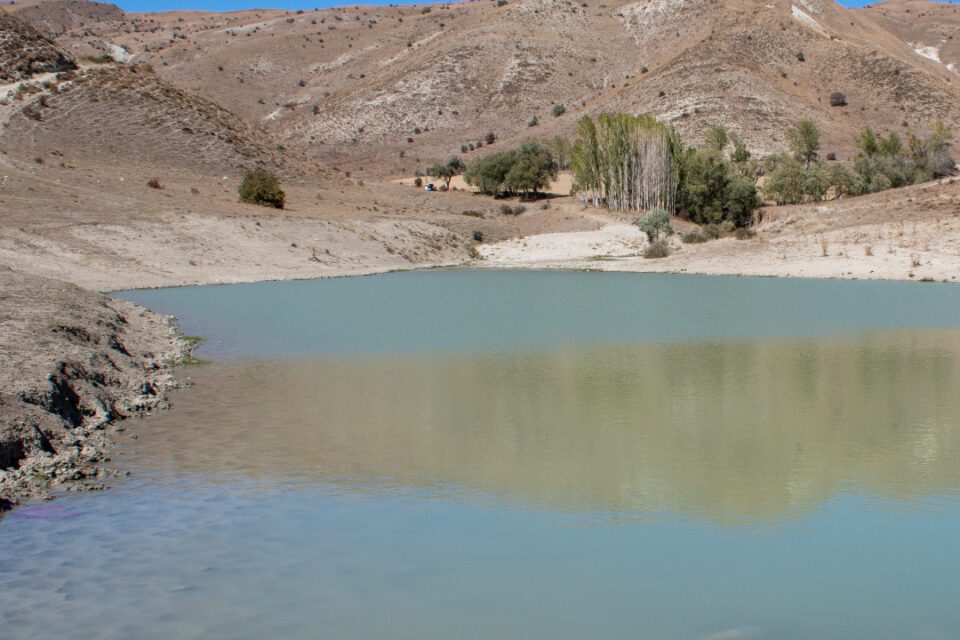A paper published by Michael Moges of Bahir Dar University (April 2021) brough my attention back to a well-known problem in water resources management in the semi-arid climate zone: rapid siltation of small reservoirs.
Water security is a prerequisite for agricultural modernization. In Ethiopia—as in many other countries—the government is trying to reduce the dependency on erratic rainfall by promoting dam-based small-scale irrigation schemes. There are many benefits associated with this distributed and small-scale setup: low investment costs, ease of maintenance, decentralized management, easy coordination with end-users, empowered local communities, impacts on downstream water resources are generally acceptable, etc. In addition, the reservoirs usually serve many other functions such as flood wave attenuation, groundwater recharge, and drinking water options for livestock.
Nevertheless, dam sedimentation is threatening the effectiveness of the small-reservoir program. Rapid sedimentation leads to a decline of the storage capacity of the reservoirs and, consequently, of the volumes of water that are available for irrigation. Moges reports an average capacity loss of 3% per year and estimates that the operational lifespan of the small reservoirs is—on average—not more than 10 years. In addition, debris and sediment can occasionally clog the water outlets. For schemes where the original command area was too large—because sedimentation was probably underestimated—we are back at the quintessential water management challenge: ‘who gets what and when’. Worse, the small-scale and local nature of the scheme could intensify potential water conflicts as the ‘winners and losers’ of the water allocation puzzle live in the same village and probably know each other personally.
It is therefore not surprising that Moges (2021) reports ‘weak social acceptability and even anger at the installation’ of small-scale reservoirs. After all, most people do not want conflict in their community.
So, what went wrong? And is this small-dam building program still worth pursuing?
Let’s start with the first question. Sedimentation was probably underestimated.
The combination of sparce vegetation, steep slopes, and intense rainfall in the semi-arid climate zone results in high sediment load during periodic flood events. In many parts of Ethiopia, this is aggravated by the prevailing soil texture. In the middle and upper reach of a river, where most small dams are established, bed load constitutes a large segment of total sediment transport. Most is captured by the reservoir. Unfortunately, it is unlikely that catchment restoration programs—despite their best efforts—will alter this reality in the short or medium term. Hence rapid sedimentation in the middle and upper catchment zone in the semi-arid climate region seems inevitable. We should take this into account.
This leads to the second question: since rapid siltation is a given, is the small-dam program still the right thing to do? I would answer this question affirmatively, for three reasons.
- The essence of the strategy is correct because: a) water security is a prerequisite for agricultural modernization; without it, yields will remain stubbornly low; b) trying to make better use of rather substantial but unpredictable rainfall—by capturing it and storing it somewhere—it probably the only feasible approach to achieve some level of water security in the semi-arid and dry sub-humid climate zones; and c) small-scale decentralized interventions are practical because they are relatively cheap and can be managed by local communities.
- The small-scale and community nature of the water distribution challenge—i.e. gradually increasing water shortages because of the declining storage capacity of the reservoirs—intensifies the conflict in the short term but is probably also at the root of its solution. After all, communities have a way to work things out and find their own set of solutions and rules—in this case water-use and/or reservoir maintenance rules. Among the central theses of Elinor Ostrom’s work is that, in many cases, no government or other outside intervention is needed at community level. While it may take some time, most communities will eventually self-organize, based on common sense, communication, and trust; provided that the scale of the challenge does not exceed the local capacity. The moto “trust the community” is probably among the strongest arguments in favor of small-scale local solutions. It implies that external management—which is expensive and often ineffective—is not necessary.
- Engineering solutions can alleviate the problems caused by reservoir siltation. Potential measures are diverse and site specific. First and foremost, it is prudent not to maximize the size of the command area in the design phase. Once siltation has occurred, straight forward measures include periodic heightening of the dam or removal of silt. Note that this may require a (one-off) government intervention. If the dam outlet is clogged by large sediment and debris, one can temporarily use a motor pump. Preferably the reservoir is connected to a local aquifer so as to facilitate groundwater recharge—even after the reservoir is (partly) silted; recharge wells can be included in the original design for this purpose. An interesting setup is to identify a gradual bend in the river in an alluvial plane, and then construct a long dike that effectively runs parallel to the channel. It will capture flood water and suspended sediment but will leave bed load in the main river. This approach was successfully implemented in the Keita region in Niger in the 1990s and still functions surprisingly well.
Given the above, I would still argue that the small-dam program represents a viable solution for a ‘wicked’ problem: how to improve agricultural yields in small communities in the semi-arid climate zone in an increasingly volatile climate. However, the design of the water retention facility requires careful thought and consideration. There is no ‘standard’ design with a small dam in the main river channel. Site selection is critical. Connection to a local aquifer is preferable. Look for ways to avoid capturing bed load. Try to create beneficial assemblies.
Hence each small-scale water retention solution will probably be different. It adds an exciting but challenging component to this important endeavor of capturing and storing rainfall and runoff in the semi-arid climate zone.
The bottom line is that failure is not an option. Without water security—which comes from capturing and storing runoff—food security, development, and associated poverty alleviation in rural areas will not succeed.

A large land regeneration project was implemented by FAO in the Ader Doutchi in Niger in the 1990s. Some interventions were successful, others less.
Low dikes constructed parallel to the river in the wide alluvial valley near the village of Keita have proved among the most successful interventions. Read more about this in this post.
REFERENCES
Michael Moges, Sedimentation in Small Irrigation Dams: A threat for food security, March 2021
